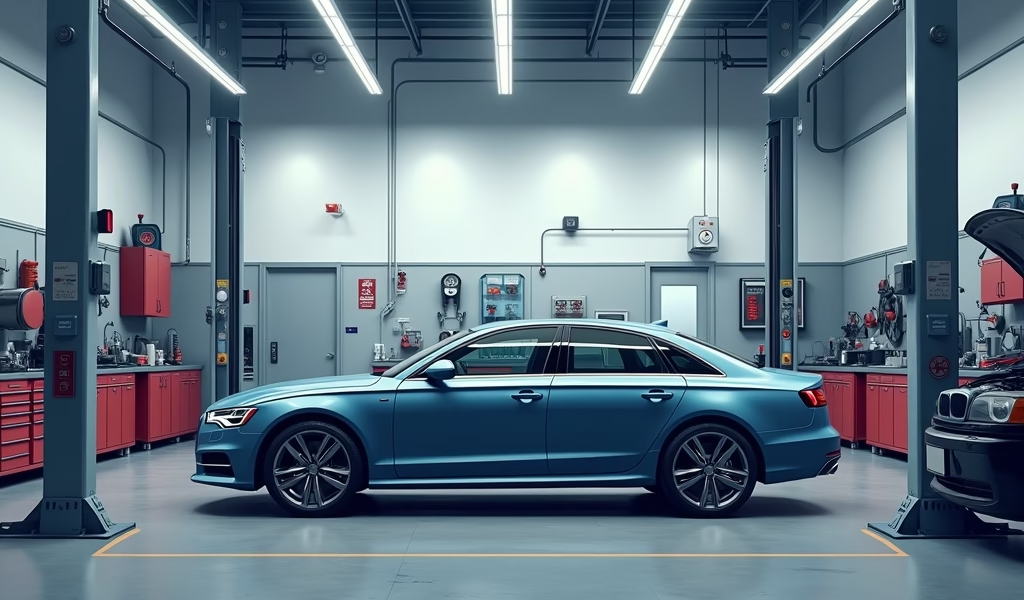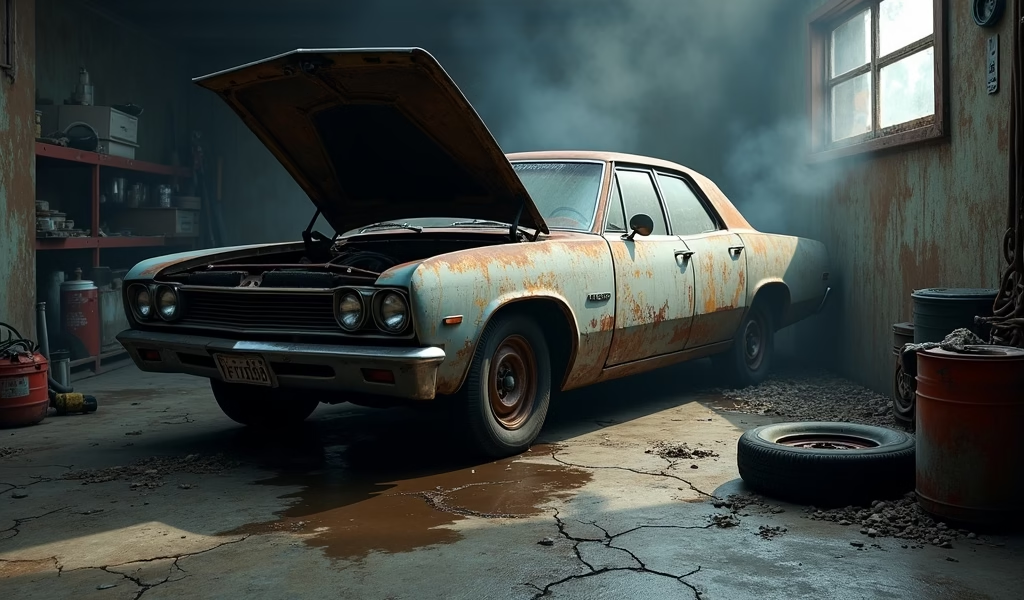Overview
This article provides seven essential maintenance tips for second-hand car owners, emphasizing that proper care—including regular oil changes, tire maintenance, battery testing, brake inspections, thorough cleaning, following maintenance schedules, and addressing minor issues promptly—can extend a vehicle’s lifespan beyond 200,000 miles. The author, a mechanic with 25 years of experience, stresses that finding reliable used cars requires looking beyond appearance to maintenance history, and that consistent care after purchase is equally important as making a good initial selection.
Table of Contents
- Introduction
- What to Look for in the Best Second Hand Cars
- Tip #1: Regular Oil Changes and Fluid Maintenance
- Tip #2: Proper Tire Care and Rotation
- Tip #3: Battery Maintenance and Testing
- Tip #4: Braking System Inspection
- Tip #5: Regular Cleaning Inside and Out
- Tip #6: Follow the Maintenance Schedule
- Tip #7: Address Small Issues Before They Grow
- Conclusion
- Frequently Asked Questions
Introduction
Finding the best second hand cars is a bit like matchmaking – you need to look beyond the shiny exterior to find a reliable partner for the road ahead. After 25 years turning wrenches and bringing older vehicles back to life, I’ve seen $1,500 cars outlast $30,000 ones simply because of how they were maintained.
Today’s used car market offers incredible value for savvy buyers. Modern vehicles regularly reach 200,000+ miles when properly cared for – something nearly unthinkable just a couple decades ago. The secret isn’t just finding the right car; it’s knowing how to care for it once it’s yours.
Whether you’ve already purchased a pre-owned vehicle or are still shopping around, these seven maintenance tips will help ensure your second hand car delivers reliable service for years to come. As we say in the shop, “Cars don’t die of old age – they die from neglect.”
What to Look for in the Best Second Hand Cars
Before diving into maintenance, let’s briefly cover what makes a used car worth buying. After inspecting thousands of vehicles, I’ve narrowed it down to a few critical factors:
- Comprehensive service history (the golden ticket of used cars)
- No accident history or evidence of major repairs
- Reasonable mileage for its age (12,000-15,000 miles annually is typical)
- Minimal rust, especially in structural areas
- Smooth, consistent engine performance
- Interior condition that matches the claimed mileage
Certain models consistently earn their reputation for longevity. Toyota Camry, Honda Accord, Mazda6, and many Subaru models frequently surpass 200,000 miles with basic maintenance. Remember, the most reliable car isn’t necessarily the one with the fewest miles – it’s the one that’s been consistently maintained.
Finding the right dealer can make all the difference. A reputable seller should welcome independent inspections and provide transparent vehicle history.

Tip #1: Regular Oil Changes and Fluid Maintenance
If there’s one thing I wish every car owner understood, it’s this: regular oil changes are the single most important maintenance item for engine longevity. Period. I’ve rebuilt engines destroyed by neglected oil changes that would have run another 100,000 miles with proper care.
For most second hand cars, I recommend oil changes every 3,000-5,000 miles, regardless of what the manufacturer states for new vehicles. Older engines develop microscopic wear that allows more contaminants into the oil. More frequent changes compensate for this natural aging process.
Don’t stop with oil. Your vehicle relies on several critical fluids:
- Transmission fluid: Check monthly for proper level and color (should be pink/red, not brown)
- Coolant: Inspect twice yearly and replace according to your vehicle’s schedule (typically 30,000-60,000 miles)
- Brake fluid: Check every 6 months and replace every 2-3 years (absorbs moisture over time)
- Power steering fluid: Monthly inspection for proper level and clarity
Remember, fluids are the lifeblood of your vehicle’s systems. I’ve seen countless repairs that could have been prevented with nothing more than proper fluid maintenance. Your owner’s manual contains the specifications for each fluid – follow them religiously.
Tip #2: Proper Tire Care and Rotation
Tires aren’t just rubber doughnuts – they’re sophisticated components that affect everything from fuel economy to safety. After seeing countless avoidable accidents in my career, I can’t emphasize tire maintenance enough.
Start with monthly pressure checks (including the spare). Temperature changes affect pressure significantly – about 1 PSI for every 10°F change. Always check pressure when tires are “cold” before driving more than a mile.
Rotate your tires every 5,000-7,000 miles to ensure even wear. The rotation pattern depends on your drive system:
- Front-wheel drive: Front tires move straight back, rear tires move to opposite front positions
- Rear-wheel drive: Rear tires move straight forward, front tires move to opposite rear positions
- All-wheel drive: Cross pattern (right front to left rear, etc.)
Watch for these warning signs:
- Uneven wear across the tread (alignment issues)
- Center wear (overinflation)
- Edge wear (underinflation)
- Irregular patches of wear (suspension problems)
Quality tires aren’t cheap, but they’re significantly less expensive than accidents. I’ve seen $15 valve stem failures lead to high-speed blowouts and totaled vehicles. Don’t skimp on rubber – it’s your only connection to the road.
Tip #3: Battery Maintenance and Testing
Battery failures always seem to happen at the worst possible times. In my experience, most people replace batteries reactively (after failure) rather than proactively, leading to those dreaded “car won’t start” moments.
Most car batteries last 3-5 years, so if you’ve purchased a used car with an unknown battery age, consider replacement a priority maintenance item. When choosing a replacement, don’t focus solely on warranty length – cold cranking amps (CCA) appropriate for your climate and reserve capacity are more important technical specifications.
Simple battery maintenance goes a long way:
- Keep terminals clean and tight (corrosion restricts current flow)
- Check for secure mounting (vibration shortens battery life)
- Test voltage regularly (healthy batteries show 12.6V when fully charged)
- Consider a battery tender for vehicles driven infrequently
Modern vehicles have increasingly complex electrical systems. That annoying warning light might be trying to tell you something important about your charging system. Don’t ignore it! Regular battery testing can identify problems before you’re stranded in a parking lot.
Tip #4: Braking System Inspection
Your braking system is arguably your vehicle’s most important safety feature, yet I regularly see used cars with dangerously worn components. As a mechanic, few things concern me more than neglected brakes.
Typical brake service intervals for second hand cars:
- Visual inspection: Every 5,000 miles
- Brake fluid flush: Every 2-3 years
- Pad replacement: When thickness reaches 3-4mm (before metal-to-metal contact)
- Rotor replacement/turning: When thickness approaches minimum specification or significant grooves develop
Warning signs you shouldn’t ignore:
- Squealing or grinding noises
- Pulsation in the brake pedal
- Longer stopping distances
- Vehicle pulling to one side during braking
- Soft or spongy pedal feel
I’ve seen customers attempt to save money by delaying brake service, only to end up paying far more for damaged rotors, calipers, and sometimes even crash repairs. Regular inspection costs little but provides enormous safety benefits and long-term savings.

Tip #5: Regular Cleaning Inside and Out
Vehicle cleaning isn’t just about appearances – it’s preventative maintenance that extends your car’s life. I’ve repaired countless vehicles with premature rust issues that proper cleaning could have prevented.
The exterior wash schedule should vary by season and environment:
- Winter: Weekly in areas using road salt
- Spring: Bi-weekly to remove pollen and environmental contaminants
- Summer: Every 2-3 weeks to protect against UV damage and bug residue
- Fall: Bi-weekly to remove tree sap and falling debris
Don’t forget the undercarriage – that’s where serious rust begins. Automatic car washes rarely clean this area thoroughly. Consider a manual pressure wash that targets undercarriage areas several times yearly.
Interior cleaning prevents premature wear and preserves value:
- Vacuum weekly to remove abrasive particles from carpets and upholstery
- Clean spills immediately to prevent staining and odors
- Condition leather quarterly to prevent cracking
- Use UV protectant on dashboard and trim to prevent cracking
A clean car is easier to inspect, too. During your cleaning routine, you’ll notice minor issues – loose trim, developing rust spots, small fluid leaks – before they become major problems.
Tip #6: Follow the Maintenance Schedule
Every vehicle has a maintenance schedule developed by engineers who designed it. These aren’t suggestions – they’re requirements for achieving maximum reliability and lifespan. With used cars for sale at record high prices, protecting your investment through proper maintenance makes more sense than ever.
For second hand cars, I recommend a slightly more aggressive maintenance schedule than the manufacturer specifies. This compensates for the vehicle’s age and accounts for possible maintenance gaps by previous owners.
Critical maintenance items often overlooked in used cars:
- Timing belt/chain (catastrophic if neglected)
- Transmission service (fluid and filter)
- Cooling system flush (prevents corrosion)
- Fuel filter replacement (affects performance and economy)
- Spark plugs and ignition components (drivability and efficiency)
Create a detailed maintenance log to track service history. This serves multiple purposes – it helps you stay on schedule, provides documentation for warranty claims, and significantly increases resale value. A used car with complete maintenance records can command 10-15% higher prices when it’s time to sell.
Consider diagnostic scanning even when no warning lights are illuminated. Many systems store “pending” codes that indicate developing problems before they trigger warning lights.
Tip #7: Address Small Issues Before They Grow
That strange noise won’t fix itself. That small leak won’t magically stop. In my decades as a mechanic, I’ve seen countless $200 repairs turn into $2,000 catastrophes because owners postponed addressing early warning signs.
Common small issues that frequently develop into major problems:
- Minor oil leaks (eventually damage engine mounts, belts, and electrical components)
- Unusual noises (often indicate bearing wear before complete failure)
- Warning lights (even intermittent ones signal developing problems)
- Soft brake pedal (indicates fluid loss that can lead to complete brake failure)
- Delayed shifting (transmission issues rarely improve without intervention)
Develop a relationship with a trustworthy mechanic who values preventative maintenance. The best repair shops would rather see you for regular maintenance than emergency repairs – it’s better for everyone involved.
Remember this mechanic’s wisdom: cars rarely fail suddenly without warning. They give signals – sometimes subtle – that something’s not right. Learning to recognize these early warnings can save you thousands in repair costs and prevent roadside breakdowns.
Conclusion
Finding the best second hand cars isn’t just about what you buy – it’s about how you maintain your purchase. The most reliable used vehicles come from a combination of smart shopping and consistent care after you drive off the lot.
By following these seven essential maintenance tips – regular fluid changes, proper tire care, battery maintenance, brake inspection, thorough cleaning, scheduled maintenance, and addressing small issues promptly – you can significantly extend your vehicle’s service life while improving safety and reliability.
Remember, most modern vehicles are engineered to last well beyond 200,000 miles when properly maintained. The difference between a used car that becomes a money pit and one that provides years of trouble-free service often comes down to these simple but critical maintenance practices.
The best investment you can make in your second hand car isn’t fancy accessories or performance upgrades – it’s consistent, thorough maintenance that addresses issues before they become problems. Your wallet (and future self) will thank you for it.
Frequently Asked Questions
What’s the most reliable second hand car for under $10,000?
Toyota Corolla, Honda Civic, and Mazda3 models consistently deliver excellent reliability in this price range. Focus on maintenance history rather than just mileage or age.
How many miles is too many for a used car?
There’s no specific mileage cutoff, as well-maintained vehicles regularly exceed 200,000 miles. More important than total mileage is how the vehicle was maintained and if major components have been replaced.
Should I buy a second hand car with accident history?
Minor accident history isn’t always a deal-breaker if repairs were properly completed. Avoid vehicles with structural/frame damage or airbag deployment, as these often indicate more serious crashes.
Is it better to buy from a dealer or private seller?
Dealers often offer limited warranties and financing but at higher prices. Private sellers typically offer lower prices but fewer protections, making a pre-purchase inspection even more critical.
How important is a pre-purchase inspection for a used car?
Absolutely essential – it’s the best $100-200 you’ll spend. A professional inspection can identify hidden problems that could cost thousands in repairs after purchase.

